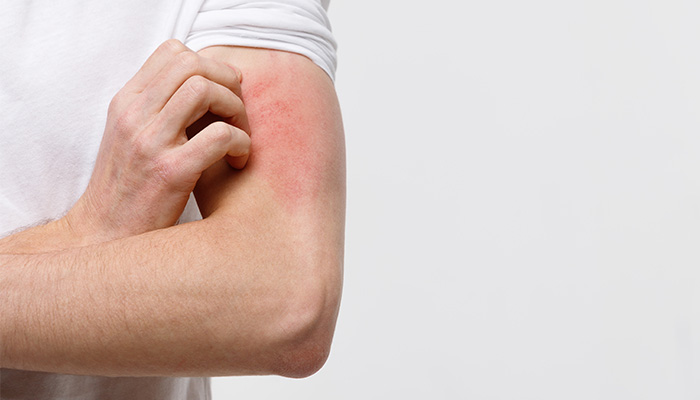Have you ever heard of a person dying from a bee sting? While bee stings are generally not a cause for concern, they can be fatal in individuals who have an allergic reaction to the bee sting venom. When the venom is injected into the body, it triggers an allergic response that affects the entire body. The likelihood of death may vary depending on the severity of the allergic reaction to the venom, which the body mistakenly perceives as a particular allergen.
Allergy is a term used to describe a condition in which the body’s immune system mistakenly overreacts to harmless substances (allergens), resulting in symptoms such as sneezing, runny nose, eye irritation, skin rash etc. These symptoms can lead to irritability, disability and in severe cases even death.
Introduction to anaphylaxis
The term “anaphylaxis” is derived from the Greek words “ana” meaning “against” and “phylaxis” meaning “protection”. Anaphylaxis is a severe, critical, or fatal allergic reaction. When foreign substances called antigens enter the body, the body’s natural defense mechanism (the immune system) recognizes the antigens. The immune system then produces antibodies, which are proteins that are specific to the antigen.
Sensitization is the process by which the body becomes sensitive to, and reacts to, a specific substance. When the sensitized body is exposed to the antigen again, these antibodies recognize the antigen, prompting the immune system cells to release inflammatory chemicals, including histamines. The release of these chemicals may result in a range of symptoms associated with anaphylaxis, including a decrease in blood pressure, difficulty breathing, wheezing, swelling, and loss of consciousness.
In some situations, blood pressure may fall suddenly, and the respiratory tract may become swollen or inflamed, leading to shortness of breath and choking, which can be life-threatening and result in death if not treated promptly. Symptoms may appear within minutes and may last for several days.
Causes of anaphylaxis
Anaphylaxis may be caused by several allergens including:
- Certain foods such as fish, shellfish, peanuts, walnuts, pecans, cashews, hazelnuts, eggs and egg products, milk and milk products, fruits etc.
- Medications namely penicillin, aspirin, over the counter pain relievers, shots for allergy or medical dyes used in radiological procedures and muscle relaxants used in anesthesia.
- Bee, wasp, yellow jacket, hornet, fire ant and sawfly stings.
- Latex products such as surgical hand gloves, medical products, as well as a variety of rubber products designed for domestic use.
- Aerobic exercise, such as jogging may trigger anaphylactic reactions. In some individuals, less strenuous outdoor activities, such as walking, may also cause an anaphylactic reaction.
Symptoms
Symptoms of anaphylaxis can manifest within minutes of exposure to allergen and sometimes it could take longer. Common symptoms include:
- Skin reactions: Itching, swelling or flushing.
- Breathing problems: Tongue and throat swelling can lead to difficulty swallowing or breathing.
- Other reactions: Dizziness, nausea, abdominal cramps, wheezing or diarrhea. Low blood pressure, rapid and irregular pulse, etc.
Emergency Kit for Anaphylaxis
An anaphylactic kit is a container that contains all the necessary items needed to provide immediate assistance in the event of an anaphylactic episode. Your doctor can provide assistance or prescribe the necessary medications and items to complete your emergency kit. Some essential items may include:
- Epinephrine shot: It is an epinephrine injection that must be administered into the arm or leg. It is one of the essential medications required to treat anaphylaxis.
- Antihistamine medicines: To stop the allergic reaction, your doctor may prescribe an antihistamine tablet, injection, ointment, or lotion.
- Inform your family and friends: Make sure your friends and family know what you’re allergic to, and that they know what to do in case of anaphylaxis.
Ways to treat anaphylaxis
If you think you’re going into an anaphylaxis shock, it’s important to know what you can do to treat yourself. Call emergency services and ask for medical help. If you’re using your anaphylactic emergency kit, you’ll need to administer the epinephrine shot either on your own or with the help of someone nearby. If your first aid kit includes any of the antihistamine medications your doctor prescribed, make sure to take them.
If you are experiencing respiratory distress, someone must perform cardio pulmonary resuscitation (CPR), which is an emergency medical procedure performed on individuals suffering from cardiac arrest or respiratory failure, to alleviate the respiratory distress until medical attention can be provided.
After anaphylaxis
After treatment, you will recover quickly and will be able to go back to your regular life. However, it is essential that you recover completely so that you can go back to your normal life as soon as possible. To avoid recurrence, get the help of friends or family members so that they can stay with you and keep an eye on you for at least 24 hours after your anaphylactic episode. In some cases, you may need to take blood or urine samples to confirm that you were having an anaphylactic reaction.
Preventing anaphylaxis
Tell your doctor if you’ve had a previous anaphylactic reaction or episode. Make sure to include this information in your medical records. Ask your doctor if you need desensitization injections. Discuss with your doctor if there are any other substances you may be allergic to.
- If you’re allergic to insect bites, wear protective clothing when going outside. Avoid walking barefoot.
- If you’re allergic to any of the ingredients, fruits, or vegetables do not consume them.
- It is recommended that individuals wear medical emergency bracelets to inform others of their condition. Additionally, it is important to have an anaphylactic emergency kit or first aid kit on hand when travelling also inform family and friends of the necessary steps to take in the event of anaphylactic shock.
A quick look at anaphylaxis
Anaphylaxis, a potentially fatal allergic reaction, is extremely rare. Prevention is the most effective treatment for anaphylaxis. Common causes of anaphylaxis include penicillin medication, insect stings, allergy-causing food, X-ray dye, rubber materials and exercise. Anaphylaxis can cause severe skin reactions, tongue and throat swelling, nausea, and even loss of consciousness. Those having a history of anaphylaxis should always carry the anaphylaxis emergency kit, as it could be the difference between survival and death.



